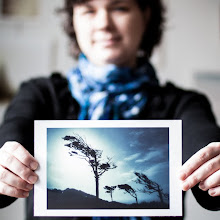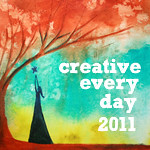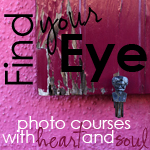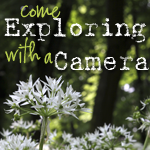Welcome to Exploring with a Camera! I'm so excited to share something new with you today. For the next couple of weeks we are going to focus on the Process of Elimination. There is a link-up at the end of this message that will remain open through September 13. You can also put your photos in the Flickr pool if you would like to be featured here on The Kat Eye View of the World blog.
Funnily enough, this topic idea came to me several weeks ago, well before our container from Italy arrived last weekend. For the last few days, we have been pursuing a physical process of elimination in our home. We have so much stuff, now that our Italian belongings have been delivered. Trying to figure out what to keep and what to eliminate has been overwhelming at times, but the end result of elimination is always so much better. I can breathe and focus.
There is a great parallel with photography here! I started noticing in the last few months that many of my images and compositions are based on eliminating the elements that shouldn't be in the image, as much as deciding what should be there. This is one reason I struggle a bit with composition in painting. With a painting, I get to add whatever I want to the composition, which is not how I normally operate. In my photography, much of the image is formed as I take away elements that don't belong in the picture. The choice of what to take away will depend on what I am trying to convey with my image. What caught my eye? What is of interest here?
Let's look at some ways to pursue the process of elimination...
Framing
For this exercise, I am going to distinguish framing from cropping. Framing is how you frame the composition in the camera at the time of taking the photo, as compared to cropping which is done in post-processing. Framing is the best way to work through the process of elimination, because you can take multiple shots. You can study angles and changes to what is in your frame real time, making adjustments as you go.
The lead in image I took in Carbondale, Colorado is a good example. The focus is on the bike, and the color/texture of the wall behind it. Blue and white bike, textured blue wall. Those are the elements that caught my eye in this scene. Before getting to that shot, however, I started with this one:
Blah, isn't it? Bike is in the center, and there is nothing that grabs you about the image. The shadows from the tree just out of the frame on the left are strong and distracting. I consider this a "warm-up" shot, helping me to work toward what I wanted to convey. First step, capture the bike and the wall. Then, use this to help me see where I want to go. For the final image at the top of the post, I worked to eliminate the strong shadows and focus just on the bike and the wall. Magic!
Here is another scene from Colorado, this time Old Colorado City, where I used the process of elimination. This is never how I would present the scene, I took this to set the stage for what comes next.
The contrasting bright colors of the purple flowers and the blue architectural detail caught my eye. This shows the scene I was working with. As framed above, I would get the color, but would the image would not be interesting. So I work to eliminate. I find an angle that focuses on the contrast between the purple and the blue.
We've got all purple and blue contrast, a pleasing composition that keeps the focus on what I saw and wanted to convey, and nothing to distract.
Let's look at one more framing example. On my last trip to Florence, Italy, I came upon this scene walking the backstreets. Shown below is the angle I originally saw it from.
Better. Quite a few distracting elements were gone, but then the new element of the door in the background was added. How to use it became the issue - crop it out or keep it wholly in the frame? What about the entry on the right, and what is that yellow thing, a handle of some cart? This image is still too busy. It was time to try again, really thinking about what I wanted to focus on. It was the bike that caught my eye, and the fact that it was being used as part of the store display. So, changing angles again, and focusing in on the store display aspect, I created one of my all time favorite photos...
Isn't that a huge difference? From random snapshot to interesting piece of art, by the process of elimination.
Cropping
Let's face it, we don't always get the best possible framing in the camera. We may be moving too quickly to study the scene, or might not notice a distracting element. Cropping in post-processing is a fantastic tool for the process of elimination.
There are times where cropping completely saves the image. Consider this example, from Pavia, Italy. I was intrigued by this vintage Fiat on the street, but I didn't stop to study it. One click and I moved on.
It might be interesting to show my friends the cool Fiat I saw in Italy, but it is nothing exciting. I would never show this here on the blog. I had to focus in on the interesting parts... the vintage license plate, the cobblestone street, and the cool reflection of the Italian architecture.
And there it is! An image that says "Classic Italian Transport" and not "I was wandering around in Italy and I randomly snapped this photo." The process of elimination worked for me here.
This image from Germany is one I've shared before of how dramatic cropping can save a shot. I loved the architecture and the vineyard on the hill behind the building:
There was just too much building and not enough interest, however. Where are you supposed to look? Cropping to focus in on the architectural detail but keep the vineyard behind yields this image:
So much more interesting. Now you know where to look! You can see the details of the bottle-glass window, the timber framing, and the painting under the eaves along with the context of the vineyard behind. A great image to show the classic German architecture of the Rhine River Valley.
Now, cropping dramatically has its consequences. You can lose significant resolution in the image. The final cropped image will not be able to be printed as large as it could have been. You might be surprised, however, just how much cropping an image from a modern digital camera can withstand before you have problems with printing resolution. Since I'm primarily sharing online, I don't have to worry about it too much, but it's good to keep in mind.
It is interesting to note that both of these cropping examples are from 2009, very early during my Italian assignment. As I took more photos and improved in my photography, I've gotten so much better at seeing and framing my images at the time of capture. All of the examples in the framing section are from the last few months. The practice of cropping in my post-processing over the last two years has helped me learn the process of elimination at the time of framing that I use today.
To be honest, I still crop most of my photos just a tiny bit. While I do most of my framing at the time of capture, what I see through the viewfinder and what the camera sensor captures is slightly different. Distractions may creep in there on the edges. That's ok with me, I know I will pull the photo in my editing software anyway to make any final adjustments. Cropping is just one of those final adjustments.
Cleaning
One last, rarely-used tool in the process of elimination is cleaning. Cleaning is where I use the clone-stamp tool in Photoshop Elements to copy over a distracting element with pixels from another area in the image. I consider cleaning a last resort, because it will not always work. I get the best image at the time of capture with as little distraction as possible, and I know if the distractions can be cropped or cleaned later.
In this example from Burano, I was going for the line of colorful houses and already envisioned some fun processing for color. No matter how I framed it though, I couldn't get the line of houses where I wanted without that last bit of pole on the right in the image.
Clone-stamp to the rescue! I removed the pole by copying other parts of the pavement onto the area with the pole. Can you see any evidence of it? Not so much at this resolution. You will also notice a slight crop, which removed some of the pole too, making my job easier.
Much better, I think. The focus is on the blue house, and the pole is no longer there to distract on the right.
I captured this great building from the top of the tourist bus, in Barcelona. I liked the repetition of the shapes, light and shadow of the windows. I was at a good angle to building, being high up on the bus, but I couldn't move from my seat to eliminate the streetlight in the image.
Because of the repetitive nature of the light and shadows, it was easy to clone the shapes and shadows of the balcony and remove the distracting streetlight. This final image was also straightened and then cropped for composition, which also helped to remove some of the streetlight. With a conversion to black and white, it's all about the repeating pattern now.
It's important to note that every image cannot be saved this way. Cleaning only works if you have the "raw material" elsewhere in the image to copy over the distracting element. That is not always the case. This is a technique to learn and practice, so that you have a better feel what can and can't be fixed later in your post-processing.
Keep in mind, cleaning takes a lot of time. It is much quicker to capture a distraction-free image than to clean it in post-processing. If you love the post-processing part of digital photography, that may be fine for you. That's not where I prefer to spend my time.
The Process Works
I hope these examples help you to see how the process of elimination works to create interesting images. Often a great image is hiding inside a so-so image, if you can remove the distracting elements. There was something in the scene that captured your eye to begin with, so focusing in while eliminating other elements will help you tell your story.
Keep these ideas in mind as you practice the process of elimination:
- Think about what you are trying to convey in your photograph. What was it about the scene that caught your eye or made you want to point your camera at it? What story do you want to tell? That is what you need to focus on. Eliminate all elements that distract from your intended message.
- Move yourself to change your perspective. Will the distractions be eliminated if you move higher? Lower? Left? Right?
- Zoom in, with your feet or your lens, to focus on the subject. Or, zoom out to keep the context in the image. If you can't decide, go back to Step 1. When you are clear on what you want to convey in the image, the decision of subject/context is easier.
- Watch and wait if needed. Sometimes the distractions are mobile, and if you wait to click you can create a stronger image.
- Crop in post-processing. This is a great tool to eliminate unwanted distractions and learn more about how framing your image makes a difference.
- Clean out distracting elements in post-processing. It may be possible to remove a small distraction in post-processing by "cleaning."
Now, it's your turn! Share the images where you used the process of elimination. If you can, share an image that shows the "before" too, so that we can see how you eliminated the distractions to create a stronger image. We will all learn more this way. Both new and archive shots are welcome! Link in below and share in the Flickr pool too. Thanks so much for your participation in Exploring with a Camera.
FYI - Links will be moderated. Please use a permalink, ensure that your linked image is on topic, and include a link back to this site in your post through the Exploring with a Camera button (available here) or a text link. Thanks!






































I was just thinking about this last night. How you're photos usually focus on part of an object and how that appeals to me. I seem to struggle with not including the whole thing!! But, I'm working on it and I'm excited about this exploration!!
ReplyDeleteAnother very helpful tutorial, Kat. I realize I need to practice framing more, and rely on cropping less. Your examples are great! Thanks so much!
ReplyDeleteThanks so much for all these really useful tips. I find as way of a "happy accident" that I shoot a shot and when I go to process it on the my computer, there's very little I have to do. So now, I'm going to be much more aware of the way I take shots, so I don't have as much to "fix" or eliminate.
ReplyDeleteHave a wonderful day and will share some shots soon.
Bright blessings,
Kathy
Oh my I learn a lot from you Kat. I am impress of that store photo and the car. I cannot think of that, ^_^ Going to continue reading here. Thanks!
ReplyDeleteGreat tutorial! So much helpful information. Thank you.
ReplyDeleteYes. framing is what I love about taking photos- that you can change your angle and focus a bit and make something that is fairly ordinary into something extraordinary!
ReplyDeleteHi, I'm new to your site. What a wonderful post. I find myself cropping photos a lot to find that perfect perspective.
ReplyDeleteBella Vida by Letty
Have a great day.
Wonderful tutorial.
ReplyDeleteBrilliant post Kat. So much information and lots of tips. Fascinating to see how you chose the framing for the shots.
ReplyDeleteThanks so much for this great explanations. It´s something what I have to learn :) I don´t like to throw stuff, even not part from the photo :). But I should!
ReplyDeleteHave a great weekend! LG Tina
This may be my favorite challenge ever - something I've wanted to focus on for a long time but never have, now I just have to find the time.
ReplyDeleteLOVE this one!!
ReplyDeletekat, what a wonderful post. i'll have to think of something to link up with!
ReplyDeleteHi! I just came over from Ashley Sisk's blog! I thoroughly enjoyed this post and you gave me so much to think about! I will be practicing this. Thank you for such a great post. I do find myself cropping photos quite often, I think it might have something to do with my fast moving children, but regardless, I should focus more on the framing. And the cleaning option is very cool, you better believe I will be trying that in Photoshop. Thank you for sharing such great tips! New follower :)
ReplyDeleteGreat post Kat. I rarely need to crop my images as I try to always frame in the camera - though it depends on which camera I'm using as my old one has so many buttons to press to get to the selective af points and I keep forgetting how to get there.
ReplyDeleteI am just reading this, but it has helped me sooooo much. I have really been enjoying still life photography, as it is a relaxing place for me with a busy 17 month old running around. I have been wanting to take those photos to the next level. I will implement these tips and hopefully see a HUGE difference.
ReplyDeleteTHANKS!!!
Added another one, Kat. :) Hope you're having a great weekend!
ReplyDeleteGreat tutorial. I often crop for removing empty space, but I loved your creativity in cropping the shots in different ways and making them more creative.
ReplyDeleteReally great tips on this one - I have spent more time lately cropping in camera, but I'm excited to see what I've got from my trip so I can apply some more of these tips.
ReplyDeleteGreat post! I used to be really good about framing in-camera but then I think I started getting a little lazy, figuring I could crop it later. But I think it is so much more gratifying when you really study the subject and think what you want to convey...just like you said. And that bike shot? Wow Kat L-O-V-E it.
ReplyDelete